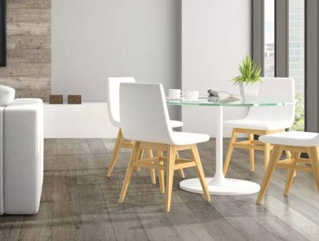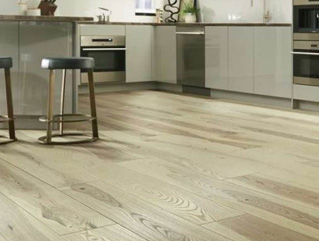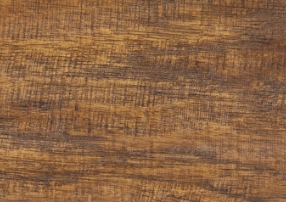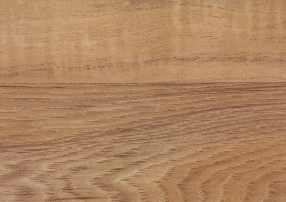Shop Engineered Wood Flooring

Shop All Engineered Wood Flooring
- Real hardwood veneer
- Improves home resale value
- Beautiful luxury looks
Shop Now

Shop Waterproof Engineered Wood Flooring
- Innovative waterproof core
- Install anywhere in the home
- Perfect for kids and pets
Shop Now

Shop Oak Engineered Wood Flooring
- One of the most popular wood species
- The industry standard for durability
- Wide range of colors to fit your style
Shop Now

Shop Textured Engineered Wood Flooring
- Hand scraped, wirebrushed, and more
- Real wood feel at affordable prices
- Easy maintenance and install options
Shop Now

Shop USA Made Engineered Wood Flooring
- Created with the highest standards
- Made from eco-friendly materials
- FloorScore® certified for air quality
Shop Now

Shop DIY-Friendly Engineered Wood Flooring
- Easy interlocking edges
- Options for a floating floor
- No professional installer needed
Shop Now
Customer Favorite Engineered Hardwood Flooring
Engineered Hardwood Reviews
Engineered Wood Flooring FAQ
Overview
Engineered hardwood is an alternative to solid wood flooring. In addition to the real wood veneer, engineered hardwood is made of artificial materials like high-density fiberboard (HDF) or stone-plastic composite (SPC).
This luxury flooring often comes with an attached underlayment to provide added durability and sound muffling.
Engineered hardwood features all the most popular wood species for flooring, including European White Oak, Hickory, and Walnut.
This luxury flooring often comes with an attached underlayment to provide added durability and sound muffling.
Engineered hardwood features all the most popular wood species for flooring, including European White Oak, Hickory, and Walnut.
Pros and Cons of Engineered Hardwood
Advantages of Engineered Wood Flooring
- Luxury visuals: An engineered wood floor offers the authentic beauty of real wood, featuring gorgeous natural color variations and detailed wood grains.
- Every plank is unique Since this is a real wood veneer, you’ll never find repeating grain patterns or an unconvincing texture.
- Moisture resistance: Depending on the core of your flooring, your engineered wood could be moisture resistant or even waterproof
- Install it anywhere: High moisture resistance means you can install it in bathrooms, kitchens, laundry rooms, and even basements!
- DIY-friendly: Some engineered hardwood is designed with click-lock or tongue-and-groove installation, and it floats above your subfloor.
Disadvantages of Engineered Wood Flooring
- Might not be able to refinish: Depending on what the manufacturer says, it might not be possible to refinish your engineered hardwood. While this cuts back on maintenance, you have less flexibility when it comes to redesigning.
- Nail or glue installation: While some engineered hardwood offers a simple click-lock design, other styles might need to be nailed or glued down. That will take some more time and effort.
How to Install Engineered Hardwood

This flooring comes with a lot of installation options, and some are easier than others. To choose the perfect installation process for you, it’s best to have a firm understanding of each type of installation method.
Floating Floor
The tongue and groove method of installation is the most common for engineered hardwood. Just insert the tongue of one plank into the groove of another, and then attach the planks using tongue and groove glue. When you’re finished, the floor will float over the subfloor without the need to glue or nail it down.
Shop Floating Engineered Wood Flooring
Glue-Down
If you are installing engineered hardwood in a high traffic area, glue-down installation is the one for you! The process can be more involved than others, so a professional is always recommended for this method.
Shop Glue-Down Engineered Wood Flooring
Nail-Down
Depending on your level of comfort with power tools, you can install your floor using the nail-down method. Simply drive nails into the tongue of the planks to connect them, and then fasten them down to the wood subfloor.
Shop Nail-Down Engineered Wood Flooring
Staple-Down
If you prefer staples over nails to fasten your engineered hardwood to the subfloor, then you’ll use the same techniques as nail-down installation.
Shop Staple-Down Engineered Wood Flooring
Engineered Hardwood Trends
Popular Hardwood Flooring Species

Oak Engineered Hardwood
Oak wood is one of the most popular species for flooring, thanks to its versatility and affordability.
Shop Oak Engineered Hardwood

White Oak Engineered Hardwood
European White Oak is a lighter, trendier version of the more common red oak. It’s perfect for a light, airy room.
Shop White Oak Engineered Hardwood

Hickory Engineered Hardwood
This is one of the harder and more durable wood species. The lighter wood color is in high demand, making it a popular choice.
Shop Hickory Engineered Hardwood

Maple Engineered Hardwood
The light to medium brown tones of maple wood flooring deliver that classic wood look.
Shop Maple Engineered Hardwood

Birch Engineered Hardwood
Birch is a light, fine-grained wood that offers a more contemporary look than warmer wood colors.
Shop Birch Engineered Hardwood

Walnut Engineered Hardwood
The deep coloring and bold wood grain of walnut flooring make this a great option for a classic or contemporary space.
Shop Walnut Engineered Hardwood
Popular Hardwood Flooring Textures

Hand Scraped
Hand scraped looks feature long, ingrained scrapes with high variation between planks, making each plank appear handcrafted, unique, and rare.
Shop Hand Scraped

Wirebrushed
These looks show subtle, intentional wire scratches leaving the appearance of exposed wood on the surface. These imperfections are smoother and more consistent than hand scraped or distressed looks.
Shop Wirebrushed

Distressed
They may feature scrapes, burns, knots, wormholes, and more, giving these floors an aged, antique look.
Shop Distressed




